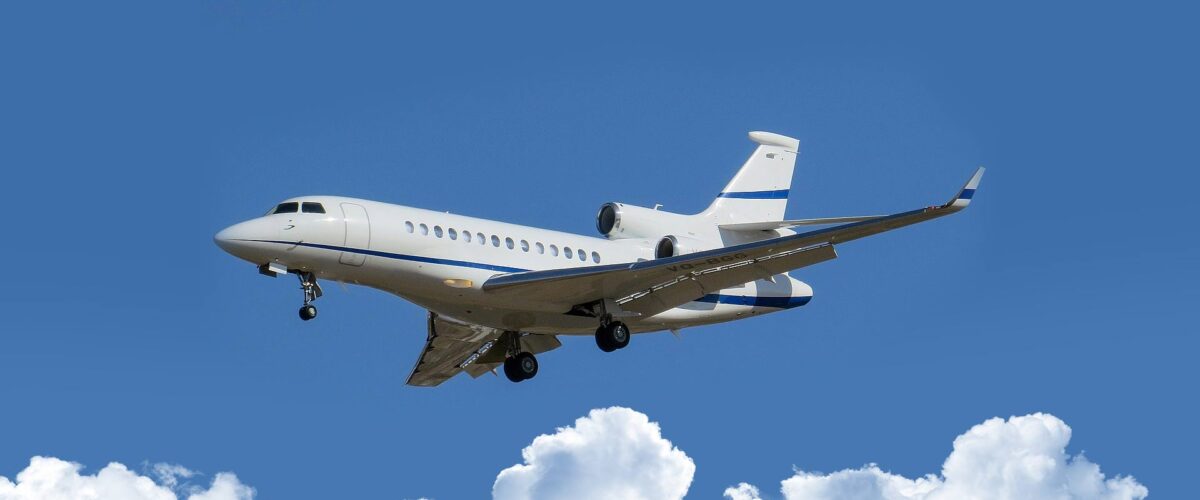The Falcon 8X is acclaimed for its long-range capacities, made possible by efficient engines, improvements in the wing design, and lower basic operating weight. The trade-off is a lower cruise speed, though this is far outweighed by the advantages. The 8X is smaller than other ultra-long-range business jets in terms of length and fuselage height, but it has a large comfortable eight-passenger cabin.
Technology Advances in the Dassault Falcon 8X
1. Advanced fly-by-wire
The latest Falcons have advanced fly-by-wire (FBW) digital flight control systems (DFCS), including closed-loop and path-stable concepts that allow the pilot to fly a trajectory rather than an attitude.
Without these digital technologies, the pilot closes the control loop by monitoring and adjusting first the attitude and then the flight path. Even a conventional FBW system does not change that input/output flow but adds flight envelope protection. In a closed-loop, trajectory-based flight control system, the pilot sets the path or trajectory. The digital flight control systems then monitor and move the flight control surfaces as necessary to match the desired path using control-law logic. The pilot does not need to constantly monitor the attitude and path as the aircraft will stay path-stable with only easy corrections needed during turbulence or a shift in wind direction.
2. Advanced cockpit
In the spacious cockpit, all the flight avionics are directly in front of each pilot. The EASy III avionics system is based on Honeywell’s Primus Epic avionics. There are four displays in a ‘T’ shape – an integrated primary flight display (IPFD) for each pilot and two multifunction display units (MDU) in the middle. The flight plan is shown on the top centre display, which is downloaded using the airborne flight information system via VHF or satellite data link. There are also two electronic flight bags (EFB) that can be loaded with approach charts, performance calculations, and dispatch and planning documents. The electronic flight bags are touch screens, but the other displays have physical controls. They work on a ‘dark cockpit’ concept so that the pilots are not inundated by indicator lights – if they are not illuminated then the flight mode is ok. The Falcon 8X also goes above and beyond with the number of flight control computers. Generally there are three, the 8X has six – three main and three secondary. It also has an additional backup computer!
The dual sidesticks are electronically rather than mechanically linked. This means they do not move in response to inputs from the autopilot, air loads on the control surfaces, or the other pilot. In the past this has been an issue and was, unfortunately, a contributing factor in the Air France Airbus A330 2009 accident. One pilot was attempting to recover the aircraft from a stall but was unaware of the dual input – they did not have control of the stick; the other pilot did. This issue has now been mitigated by both an audio warning of ‘dual input’ and stick vibration.
3. Advanced combined vision system
The FalconEye system is another safety advantage on the 8X. It combines the synthetic vision system (SVS), a database-driven terrain mapping system, with the combined vision system (CVS), which uses six sensors that fuse infrared and visible light to create thermal and low-light camera images. This allows the pilots to see an actual view, as well as the SVS database-generated one. On their own SVS won’t show runway obstacles, and CVS won’t show the approaching terrain in some weather conditions. Used together it provides unprecedented situational awareness in all conditions. It is far in advance of other enhance vision systems (EVS).
Future Developments – Falcon 10X
Falcon have always been ahead of the game with advanced design and technology for efficiency, speed, comfort, and safety. The whole of the Falcon family is impressive. As always, future developments are already in the pipeline.
The Dassault Falcon 10X is the latest addition and is set to enter into service by the end of 2025. The 10X will have an impressive range of 7,500 nm / 13,890 km, making it the longest-range aircraft in its class. With a high cruise speed of .85 Mach, it is also one of the fastest. The 10X’s very-high aspect ratio wings with advanced, retractable high-lift devices will also give it greater manoeuvrability at low approach speeds. Though the other Falcon’s have efficient engines, the 10X will boost the most advanced and efficient yet, with the Rolls-Royce Pearl® 10X, which is still in development.
The spacious cockpit will have all Falcon’s usual advanced systems along with the new feature of dual head-up displays (HUD) for the primary displays (the 8X has but one large HUD). This will provide even better situation awareness for the pilots.
The 10X will also have taller and wider dimensions providing a larger cabin than any business jet currently available. The versatile modularity options and extra-large windows will additionally make it one of the most comfortable business jets.
Conclusion
The Dassault Falcon 8X is an impressive business jet that has set the bar high. It features a number of innovative safety features, as is to be expected from the Falcon range, along with expectational performance and efficiency.
The Falcon 10X promises even greater advances, making it one of the most anticipated business jets on the horizon and setting a new standard for comfort and luxury in business air travel.

